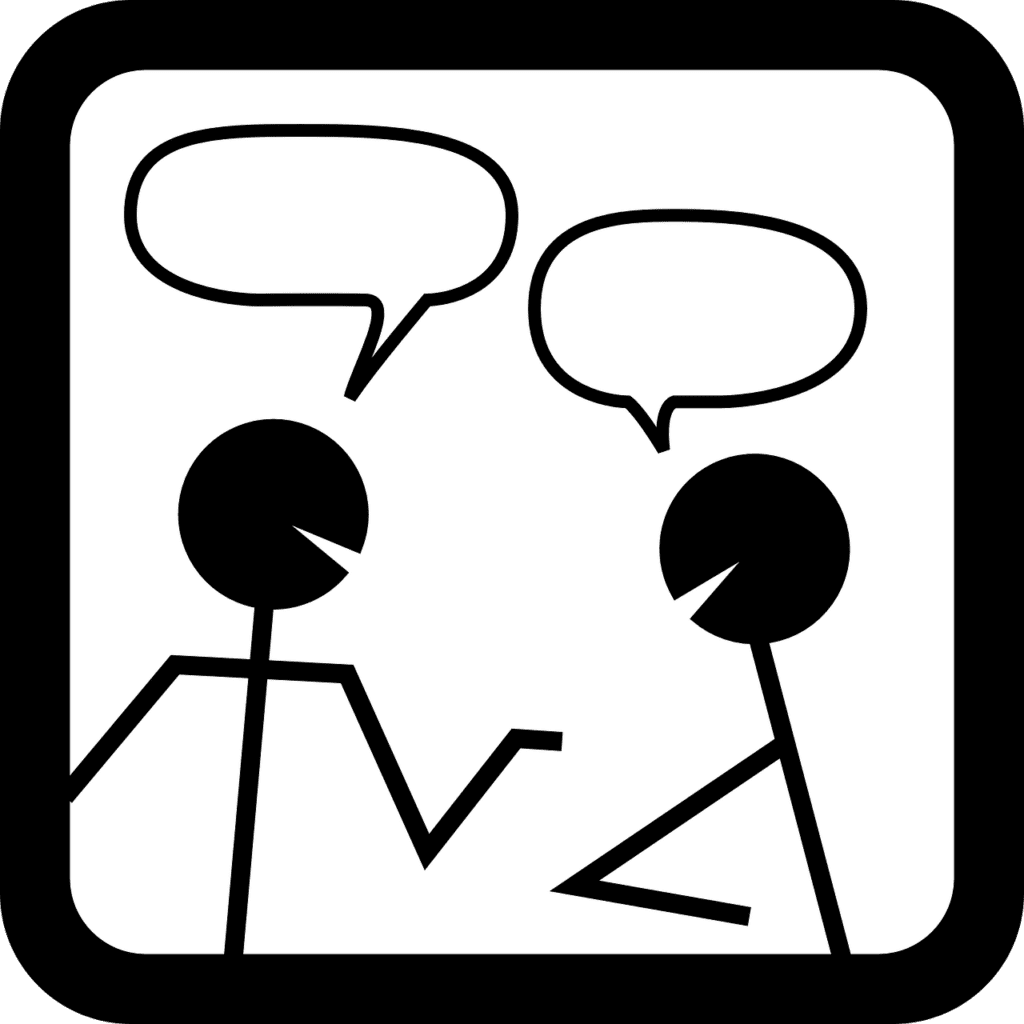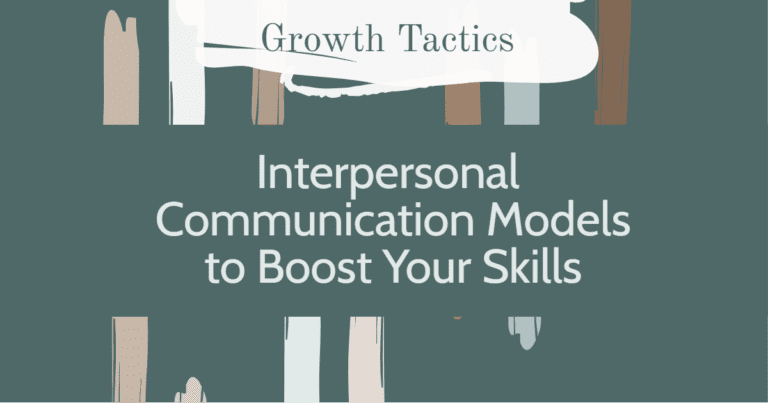Interpersonal communication is an essential aspect of our daily lives. Whether we are talking to a friend, collaborating with colleagues, or building relationships, effective communication plays a pivotal role in our interactions. To enhance our understanding of this fundamental skill, it is important to explore interpersonal communication models that provide a framework for effective communication.
In this article, we will delve into various interpersonal communication models and discuss how gaining proficiency in interpersonal communication skills can greatly impact our personal and professional relationships. So, let’s embark on a journey of discovery and equip ourselves with the tools to boost our communication prowess!

Jump To Section
Understanding Interpersonal Communication Models
Communication models are conceptual frameworks that help us understand the process of interpersonal communication. They provide a structured approach to examining the various elements involved in communication, such as the sender, receiver, message, context, and feedback. These models serve as valuable tools for dissecting the complexities of communication and enhancing our understanding of how messages are transmitted and interpreted.
Importance of Models of Interpersonal Communication
Interpersonal communication models hold significant importance in our everyday lives. They help us to grasp the dynamics of communication interactions, identify potential barriers and challenges, and improve our overall communication skills. By familiarizing ourselves with different communication models, we can become more conscious and intentional communicators, capable of effectively conveying our thoughts and understanding the messages of others.
Moreover, understanding communication models enables us to navigate the intricacies of interpersonal relationships. Whether it’s understanding the impact of nonverbal cues and body language, recognizing cultural differences and their influence on communication styles, or interpreting the underlying meanings behind messages, models of interpersonal communication provide us with valuable insights and tools for improving our interactions.
By delving deeper into these models, we can learn to adapt our communication styles to specific contexts, enhance our ability to express ourselves clearly, actively listen to others, and build stronger connections with those around us.
In the next sections of this article, we will explore some popular communication models and their key concepts, which will further enhance our understanding of interpersonal communication and strengthen our communication skills.
Common Communication Models

1. Sender-Receiver Model
The sender-receiver model is one of the most basic and widely recognized communication models. It portrays communication as a linear process where a sender sends a message and a receiver receives and interprets that message. In this model, communication flows in one direction, from the sender to the receiver, without room for immediate feedback or interaction. However, it is important to note that communication is not always as simple and straightforward as this model suggests, as there are often complexities and influences at play that can impact the process.
2. Transactional Model
The transactional model of communication is a more dynamic and interactive approach compared to the sender-receiver model. In this model, communication is viewed as a continuous and simultaneous exchange between both the sender and the receiver. Both parties involved in the communication process are seen as senders and receivers simultaneously. Additionally, this model emphasizes the influence of context and feedback, highlighting that communication is influenced by various factors such as cultural backgrounds, personal experiences, and nonverbal cues.
3. Interactive Model
The interactive model builds upon the transactional model by placing a greater emphasis on feedback and response. In this model, communication is viewed as a cyclical process that involves continuous feedback and exchange. The interactive model recognizes that communication is not just about transmitting messages but also about active listening, interpreting, and responding to the messages received. It also emphasizes the importance of nonverbal communication, such as body language and gestures, in enhancing and shaping the communication process.
4. The Helical Model of Communication
The helical model of communication takes into account the longitudinal nature of human communication. This model suggests that communication is not a linear process but rather a spiral-like journey where individuals, through repeated interactions, continue to expand, refine, and deepen their understanding and relationship. The helical model acknowledges that as individuals engage in communication over time, their interpretations, understanding, and perceptions evolve, leading to a more complex and nuanced form of communication.
5. Shannon-Weaver Model of Communication
The Shannon-Weaver model of communication, also known as the information theory model, was developed by engineer Claude Shannon and mathematician Warren Weaver. This model focuses on the transfer of information from a sender to a receiver through a communication channel. It views communication as a linear process with six key elements: sender, encoder, message, channel, decoder, and receiver.
According to this model, communication can be disrupted by various factors such as noise or interference in the channel. The Shannon-Weaver model emphasizes the importance of clarity and accuracy in the encoding and decoding of messages. It provides insights into how information is transmitted and received in communication processes, making it a valuable tool for understanding and improving communication effectiveness.
6. Berlo’s Model of Communication
Berlo’s model of communication was created by David Berlo, a communication theorist and professor at the University of Illinois. This model describes communication as a dynamic and interactive process that involves four key components: source, message, channel, and receiver. Berlo’s model can be seen as an expansion of the Shannon-Weaver model, taking into account the importance of contextual factors and feedback.
It emphasizes the significance of the receiver’s response in shaping the communication process and understanding the message. This model highlights the importance of effective encoding and decoding of messages, as well as selecting the appropriate channel for communication. Berlo’s model can be used in a diverse range of contexts, such as interpersonal, small group, and mass communication.
7. Osgood-Schramm Model
The Osgood-Schramm model of communication was developed by Charles Osgood and Wilbur Schramm, two prominent communication theorists. This model focuses on the role of feedback and understanding in the communication process. It proposes that communication is not just about transmitting information but also about achieving shared meaning between the sender and receiver.
The model consists of three main components: source, message, and receiver, with the addition of feedback as a crucial element. It recognizes that communication is a two-way process and that feedback plays a vital role in ensuring effective communication.
The Osgood-Schramm model also takes into account factors such as perception, interpretation, and context in shaping the communication process. It provides a framework for understanding how individuals interpret and respond to messages, emphasizing the importance of mutual understanding and feedback for successful communication.
8. Dance’s Helical Spiral of Communication Model
Dance’s Helical Spiral of Communication Model was developed by communication scholar Frank Dance in 1967. It is also known as the helix model of communication. It views communication as a continuous and evolving process that occurs throughout an individual’s lifespan, from birth to death. The model emphasizes the importance of context and experience in shaping communication, as well as the influence of time on the communication process.
Communication is depicted as a spiral that expands over an individual’s life, with each rotation representing new experiences and meanings. The model focuses on the cyclical and non-repetitive nature of communication and the fact that every interaction builds on past interactions. It also recognizes that communication is influenced by various factors such as culture and gender, and that individuals can construct their understanding of communication based on their experiences.
Westley-MacLean Model
The Westley-MacLean Model of Communication, proposed by Bruce Westley and Malcolm S. MacLean Jr. in 1957, offers a comprehensive framework for understanding communication processes in both interpersonal and mass communication contexts. At its core, the model recognizes the influence of environmental factors and subjectivity on communication. It emphasizes the importance of context and sensory experiences in shaping communication outcomes.
The model highlights the creation of messages by the source (A) and their reception by the receiver (B), while also acknowledging the role of mass media (C) in the communication process. Additionally, the Westley-MacLean Model emphasizes the crucial role of feedback in achieving effective communication.
It underscores the need for simultaneous orientation and shared understanding to achieve successful communication outcomes. Overall, this model provides valuable insights into the complexity and dynamics of communication, emphasizing the significance of context, subjectivity, and feedback for meaningful and impactful communication.
These communication models provide valuable frameworks for understanding the different dimensions and complexities of interpersonal communication. By familiarizing ourselves with these models, we can gain a deeper appreciation for the intricacies of communication and develop more effective and meaningful interactions.

Elements of Interpersonal Communication
Effective interpersonal communication involves various elements that work together to facilitate clear and meaningful exchanges. Here are four key elements of interpersonal communication:
Verbal Communication
Verbal communication refers to the use of spoken or written words to convey messages. It involves choosing the right words, using appropriate language and tone, and coherently organizing thoughts. Verbal communication plays a crucial role in expressing ideas, sharing information, and engaging in conversation. It is important to be mindful of our language and choose our words thoughtfully to ensure our message is understood and received as intended.
Nonverbal Communication
Nonverbal communication involves the use of cues that are not expressed through words. This includes body language, facial expressions, gestures, posture, eye contact, and tone of voice. Research suggests that nonverbal cues often carry more weight and influence in communication than the words themselves. Being aware of and effectively using nonverbal communication can enhance the clarity and impact of our messages, as well as help us understand the emotions and intentions of others.
Listening Skills
Listening is a fundamental element of effective interpersonal communication. It involves actively paying attention to others, understanding their message, and responding appropriately. Effective listening requires concentration, empathy, and comprehending and interpreting verbal and nonverbal cues. By being a good listener, we show respect for others, foster trust, and promote open and meaningful communication.
Feedback
Feedback is a crucial component of interpersonal communication. It refers to the response or reaction provided by the receiver to the sender’s message. Feedback can be both verbal and nonverbal and helps to confirm understanding, clarify information, and validate or adjust the communication process. Giving and receiving feedback constructively and respectfully facilitates effective communication and fosters mutual understanding.
By recognizing and honing these elements of interpersonal communication, we can improve our ability to express ourselves clearly, understand others more deeply, and build stronger and more meaningful connections. Developing proficiency in verbal and nonverbal communication, refining listening skills, and being open to giving and receiving feedback can greatly enhance our interpersonal communication capabilities.

Developing Effective Communication Skills
Effective communication is a key component of personal and professional relationships. It helps establish trust, understanding, and mutual respect. Here are some tips on how to develop effective communication skills:
Importance of Developing Communication Skills
Developing effective communication skills can have a significant impact on both personal and professional success. By improving our ability to communicate with others, we can build stronger relationships, resolve conflicts, and become more effective leaders. Good communication skills also play a crucial role in job interviews, team building, and networking.
Active Listening
Active listening involves fully concentrating on what the speaker is saying, processing the information, and responding appropriately. It means giving complete attention to the speaker as well as to their nonverbal cues and body language. Active listening helps to build understanding and can prevent misunderstandings that can lead to conflict.
Empathy
Empathy involves putting ourselves in the other person’s shoes and understanding their perspective and feelings. It helps create a connection based on shared understanding and fosters a sense of mutual respect and trust. Empathy can also play a crucial role in reconciling differences and resolving conflicts.
Effective Feedback
Giving and receiving feedback effectively and constructively enhances communication and creates positive outcomes. Effective feedback involves providing specific and actionable information that is focused on behavior or actions, rather than on personal traits. It is important to deliver feedback in a respectful and non-judgmental manner to ensure that it is received positively.
By developing effective communication skills, we can improve our ability to connect with others, build trust, and foster mutual understanding. Active listening, empathy, and effective feedback are just a few of the key elements that can help us become more effective communicators in both personal and professional settings.
Conclusion
In conclusion, understanding and utilizing interpersonal communication models can greatly enhance our communication skills and abilities. By actively working on improving our communication skills, we can boost our relationships, advance our careers, and create more meaningful and effective interactions.
Embracing these communication models and elements can empower us to become better communicators, leading to richer connections and increased success in both personal and professional realms.


